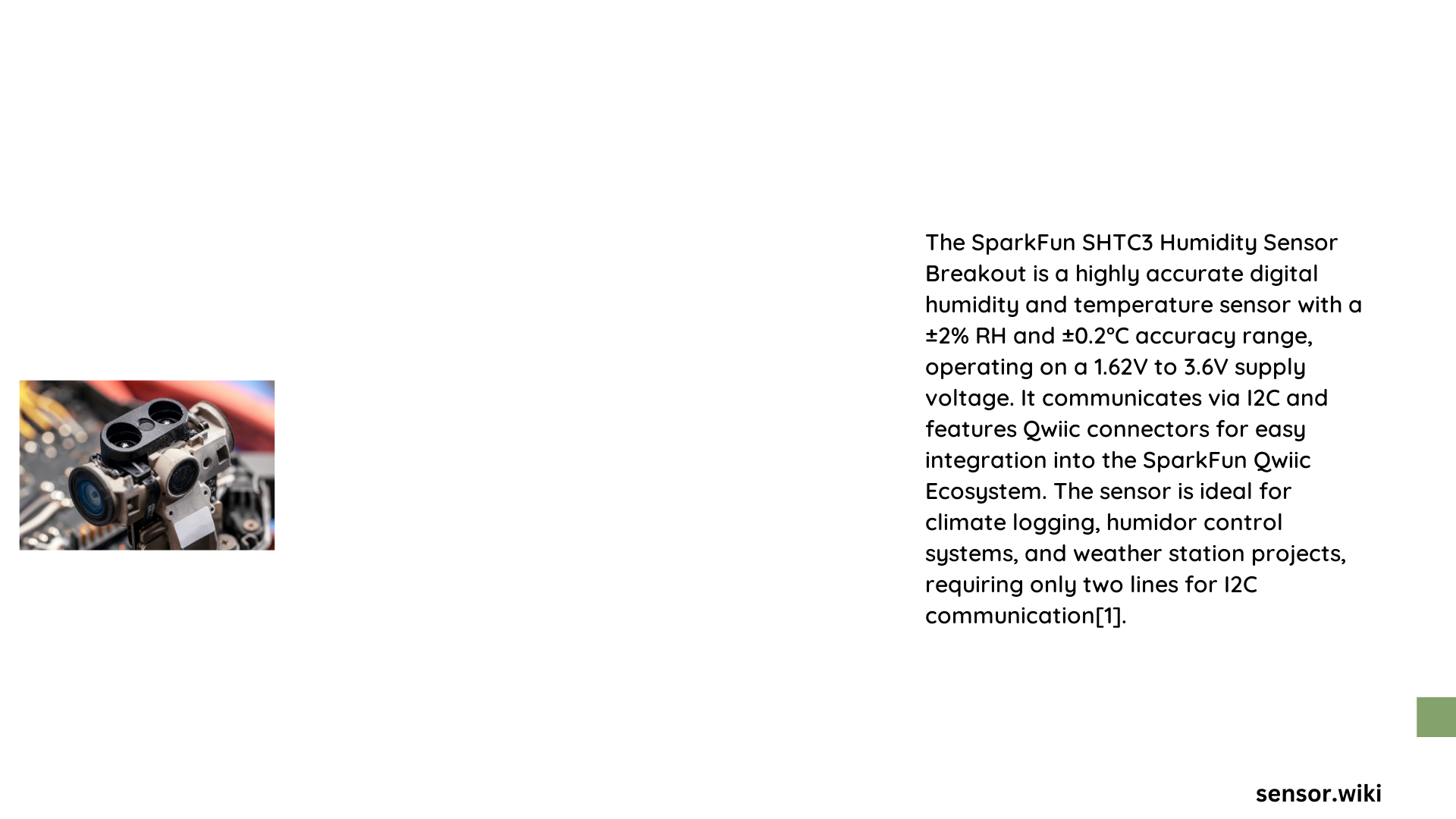A humidity sensor breakout board represents a critical electronic component designed to measure and convert atmospheric moisture levels into precise digital signals. These compact, versatile devices integrate advanced sensor technologies like SHTC3, HTU31, and AHT20, enabling engineers, hobbyists, and researchers to accurately monitor environmental conditions across diverse applications such as HVAC systems, agricultural monitoring, weather stations, and industrial control environments.
What Makes Humidity Sensor Breakout Boards Essential?
Humidity sensor breakout boards provide a standardized, easy-to-integrate solution for measuring relative humidity and temperature with exceptional precision. These boards transform complex sensor technologies into user-friendly interfaces compatible with various microcontrollers and development platforms.
Key Technical Characteristics
| Sensor Model | Voltage Range | Communication Protocol | Temperature Accuracy | Humidity Range |
|---|---|---|---|---|
| SHTC3 | 1.62V – 3.6V | I2C | ±0.2°C | 0-100% RH |
| HTU31 | 3.3V – 5V | I2C | ±0.2°C | 0-100% RH |
| AHT20 | 3.3V – 5V | I2C | ±1°C | 0-100% RH |
How Do Humidity Sensor Breakout Boards Work?

Signal Conversion Process
- Moisture Detection: Specialized capacitive or resistive sensing elements detect ambient humidity
- Digital Conversion: Integrated circuits transform analog signals into digital measurements
- I2C Communication: Standardized protocol enables seamless data transmission to microcontrollers
What Are the Primary Application Domains?
Industrial Monitoring
- Precise environmental condition tracking
- Quality control in manufacturing processes
- Equipment performance optimization
Agricultural Technology
- Soil moisture assessment
- Greenhouse climate management
- Crop health monitoring
Smart Home Integration
- HVAC system optimization
- Indoor air quality management
- Energy efficiency improvements
Which Microcontrollers Support Humidity Sensor Breakout Boards?
Most humidity sensor breakout boards are compatible with:
– Arduino platforms
– Raspberry Pi
– ESP32/ESP8266
– STM32 microcontrollers
– Particle Photon
Wiring and Integration Strategies
Standard Connection Protocol
Sensor Breakout Board | Microcontroller
-----------------------|-------------------
VCC | 3.3V/5V Power
GND | Ground
SCL | Clock Pin
SDA | Data Pin
What Challenges Might Developers Encounter?
Potential Integration Issues
- Clock stretching compatibility
- Voltage level matching
- Pull-up resistor configuration
- Electromagnetic interference
Best Practices for Deployment
- Verify voltage compatibility
- Implement proper shielding
- Use dedicated libraries
- Calibrate sensors periodically
- Consider environmental constraints
Performance Optimization Techniques
- Implement low-pass filtering
- Use hardware abstraction layers
- Select appropriate sampling rates
- Implement error correction algorithms
Cost and Availability Considerations
Humidity sensor breakout boards typically range from $5 to $25, depending on:
– Sensor technology
– Accuracy specifications
– Additional features
– Manufacturer reputation
Future Development Trends
- Increased miniaturization
- Enhanced wireless connectivity
- Improved power efficiency
- Advanced multi-sensor integration
Reference:
– SparkFun SHTC3 Breakout Board
– Adafruit HTU31 Breakout Board
– Adafruit AHT20 Breakout Board
